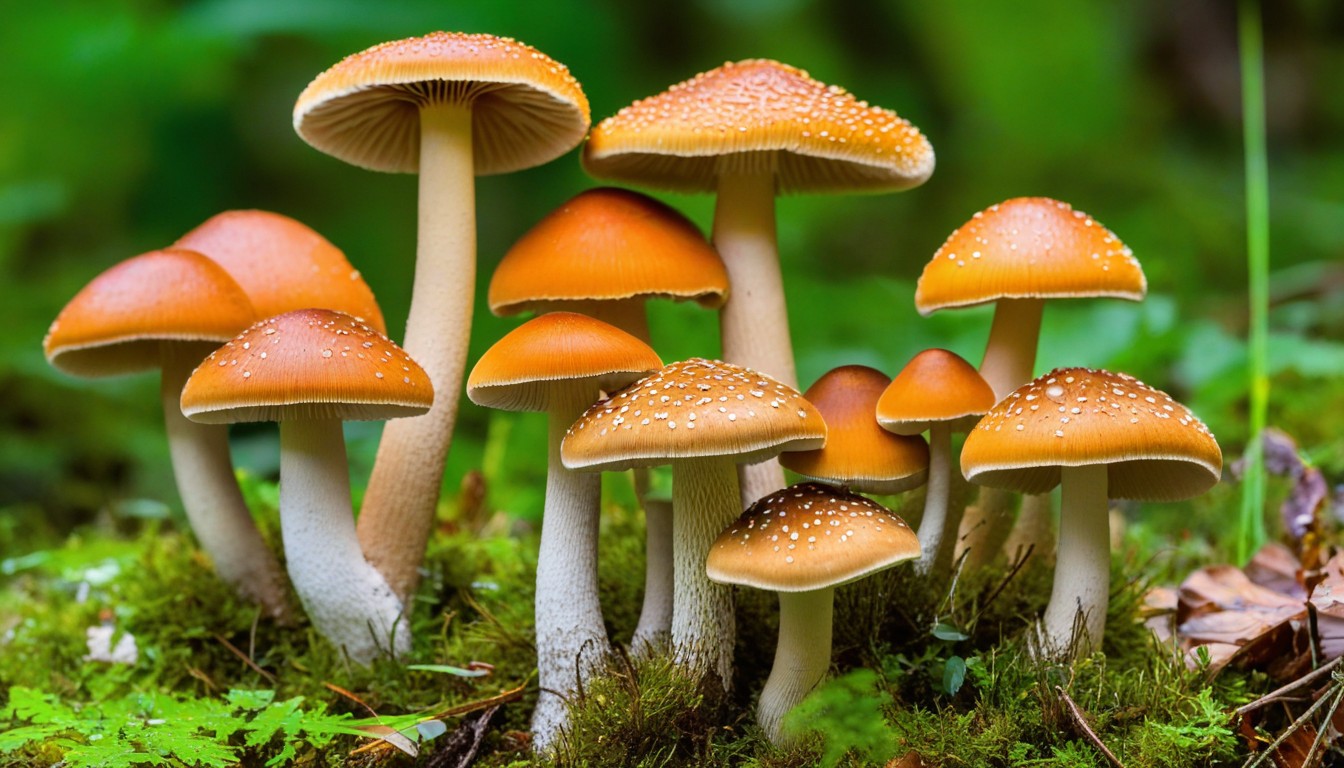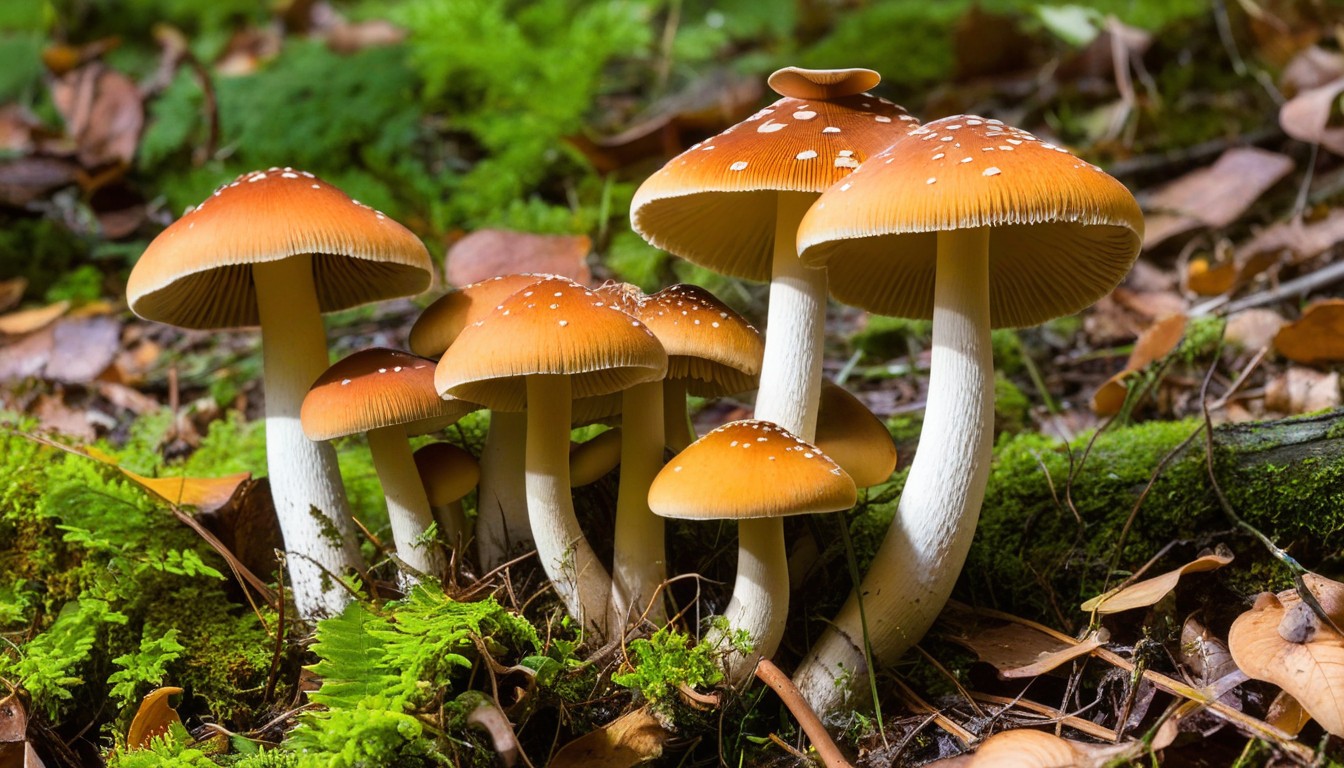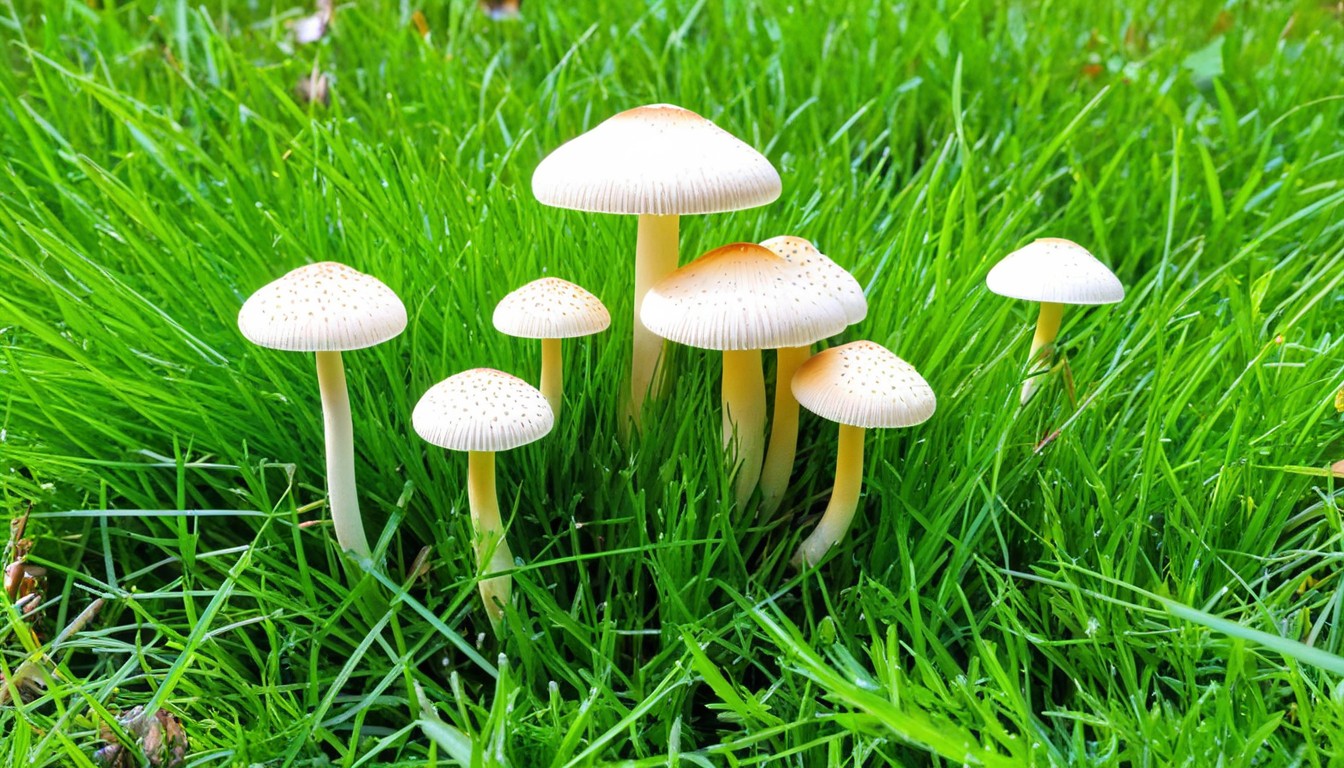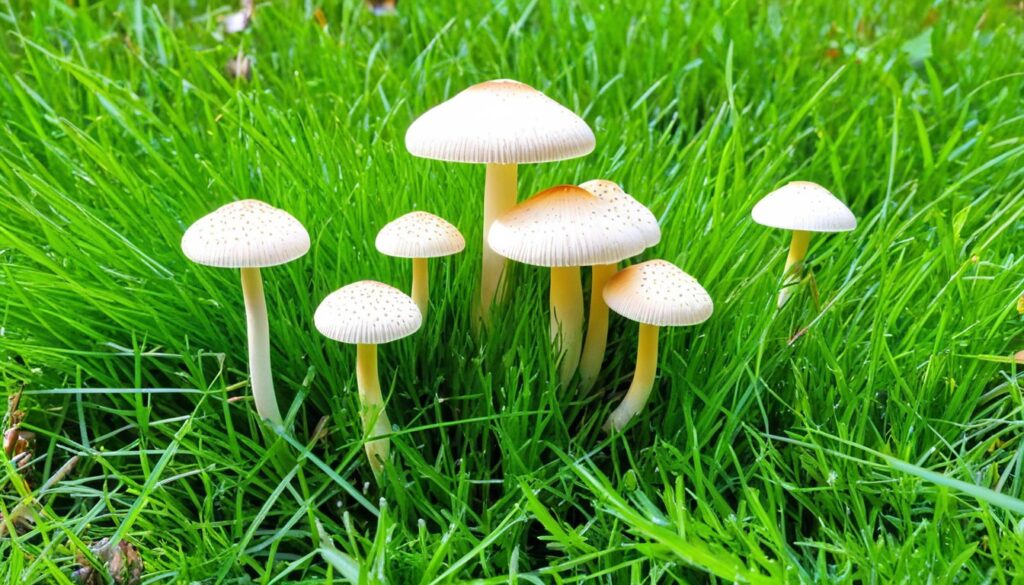Are you looking to explore the diverse world of mushrooms in Florida? Whether you’re a seasoned forager or new to mushroom identification, this guide will provide you with essential tips for identifying different species found across the state. With so many varieties to discover, from edible to toxic and rare to common, understanding the key features for safe mushroom identification is crucial.
Key Takeaways
- Identifying mushrooms in Florida requires paying attention to key features.
- Safe and responsible foraging practices are crucial for both your safety and the environment’s well-being.
- Florida is home to both edible and toxic mushroom species of different shapes, colors, and tastes.
- There are various resources available to help with mushroom identification in Florida.
- Several mushroom hunts and festivals occur throughout the state, offering opportunities for mushroom enthusiasts to connect and learn from experts.
Understanding Florida’s Mushroom Diversity
Florida is home to a diverse range of mushroom species, each with their distinct characteristics and qualities. Whether you’re a seasoned forager or a beginner, it’s crucial to familiarize yourself with the different types of mushrooms you may encounter during your explorations.
Among the commonly found species are edible varieties such as Chanterelles, Morels, and Puffballs, which make for delicious additions to any meal. However, it’s also important to note that Florida is home to some potentially toxic species, including the Deadly Galerina and the Death Cap.
Exploring the state’s mushroom diversity can be an excellent way to learn about the local ecosystem and gain a deeper appreciation for nature’s diversity. It’s also an excellent opportunity to connect with fellow mushroom enthusiasts and learn from experts in the field.
Florida Mushroom Species
Florida boasts a diverse range of mushroom species, including several rare and unique varieties. Some of the most commonly found species in the state include:
|
Mushroom species |
Description |
|---|---|
|
Chanterelles |
These mushrooms have a golden-yellow color and a funnel-shaped cap. They can be found in Florida’s hardwood forests and are prized for their rich flavor. |
|
Morels |
These mushrooms have a distinctive honeycomb-shaped cap and are considered a delicacy. They can be found in Florida’s moist, shaded areas. |
|
Puffballs |
These mushrooms are round and white, resembling balls. They can grow very large and release clouds of spores when disturbed. |
|
Deadly Galerina |
These mushrooms are small and brown, with a distinctive bell-shaped cap and a ring on the stem. They contain a deadly toxin that can cause liver failure. |
|
Death Cap |
These mushrooms have a distinctive greenish-yellow cap and can be found in Florida’s oak and chestnut forests. They contain a potent toxin that can be fatal. |
Identifying different mushroom species can be challenging, but taking the time to understand their unique characteristics can make the process much more manageable. In the next section, we’ll explore some essential tips for identifying mushrooms in Florida accurately.
Safe Mushroom Foraging Practices
Foraging for mushrooms in Florida is an excellent way to explore nature and enjoy some delicious treats. However, it’s crucial to follow safe practices to ensure a successful, enjoyable, and responsible foraging experience. Here are some guidelines to help you forage safely and ethically:
- Know the law: Be aware of local regulations and restrictions on where and when you can forage for mushrooms.
- Choose safe locations: Be cautious of foraging near busy roads, contaminated sites, or areas with pesticides or herbicides.
- Wear proper equipment: Wear appropriate clothing, including long sleeves, pants, and sturdy shoes, and bring gloves, a basket, and a knife.
- Respect the environment: Don’t damage or disturb the habitat and avoid over-harvesting or taking endangered or rare species.
- Identify mushrooms correctly: Always use reliable resources for identification before consuming any mushroom. If in doubt, err on the side of caution and don’t consume it.
Key Features for Mushroom Identification

Identifying mushrooms in Florida can be a challenging task, but it becomes much easier if you know what to look for. Here are some of the key features to pay attention to when identifying mushrooms:
- Cap shape: The shape of the mushroom cap can provide useful clues about its identity. Caps can be round, flat, or cone-shaped, among other variations.
- Gills: The gills on the underside of the cap can be important for identifying mushrooms. Note their color, spacing, and attachment to the stem.
- Stem: The stem of a mushroom can be a useful feature to identify the species. Is it thick or thin? Does it have a ring or scales?
- Spore color: To identify a mushroom, you may need to examine its spore color. You can do this by placing a mature mushroom cap on a piece of white paper and waiting for the spores to drop.
- Odor: Lastly, pay attention to the odor of the mushroom. Some species have a noticeable aroma that can help with identification.
By taking note of these key features, you’ll be well on your way to identifying mushrooms in Florida with ease.
Edible Mushroom Species in Florida
Foraging for edible mushrooms in Florida is not only a fun activity but also a delicious one. Below, we’ll outline some of the most commonly found edible species in the state:
|
Mushroom Species |
Identification Tips |
Cooking Methods |
Look-Alikes to Avoid |
|---|---|---|---|
|
Chanterelle (Cantharellus floridae) |
Yellow to orange cap with blunt, curved gills that run down the stem. No visible veil. |
Great for sautéing, grilling, and roasting. Adds a rich, earthy flavor to any dish. |
False chanterelle (Hygrophoropsis aurantiaca) |
|
Chicken of the woods (Laetiporus sulphureus) |
Bright orange cap with a soft, fleshy texture. No visible gills. |
Best suited for soups, stews, and stir-fries. Has a meaty, savory flavor. |
Poisonous look-alikes include the sulfur shelf (Laetiporus cincinnatus) and the orange pore fungus (Fomitopsis pinicola). |
|
Lion’s mane (Hericium erinaceus) |
Distinctive white, furry appearance with no cap and no visible gills. |
Excellent when sautéed or roasted. Has a sweet, mild flavor that resembles crabmeat or lobster. |
No known toxic look-alikes, but can be confused with the non-edible bear’s head tooth (Hericium americanum). |
|
Morel (Morchella spp.) |
Distinctive, cone-shaped cap with deep, pitted ridges and a honeycomb-like surface. |
Best suited for frying, sautéing, and adding to soups and stews. Has an earthy, nutty flavor. |
No known toxic look-alikes, but some species of false morel (Gyromitra spp.) can be deadly if consumed. |
Remember to thoroughly clean and cook all mushrooms before consumption to prevent any potential health risks. When foraging for mushrooms, always take extra caution and ensure proper identification before consuming any wild species.
Toxic Mushroom Species in Florida

While exploring the fascinating world of mushrooms in Florida, it’s crucial to be aware of the toxic varieties that can cause significant health risks. Some poisonous species may resemble safe edible mushrooms, making it challenging for even experienced foragers to differentiate them. To help you stay safe, we’ve compiled some of the dangerous mushroom species that you should avoid:
|
Mushroom |
Distinguishing Features |
Health Risks |
|---|---|---|
|
Amanita phalloides |
Grows with deciduous trees, white gills, and a cap that ranges from grayish-green to olive. The stem has a skirt-like ring, and the base has a bulbous sac known as the volva. |
Deadly poison that affects the liver and other organs. Symptoms may not appear until several hours after ingestion and can cause liver failure, coma, and death. |
|
Amanita ocreata |
Found near oak trees, with a white cap and gills, and a smooth white stem. The cap has a distinct bump in the center, and the base of the stem has a membranous sac known as the volva. |
The poison attacks the liver, leading to severe abdominal pain, vomiting, and diarrhea. Symptoms can take several days to appear, and without prompt medical treatment, the poisoning can result in death. |
|
Gymnopilus junonius |
Bright orange or yellow-orange cap that becomes sticky when wet. The gills are rusty brown, and the stem has a distinct fibrous ring that is often covered in tiny hairs. |
Contains a compound that can cause hallucinations, agitation, and paranoia. In severe cases, the individual can experience seizures, kidney failure, and potentially fatal hyperthermia. |
|
Conocybe filaris |
Small mushroom with a conical cap and a narrow, fragile stem. The cap is a light brown color with a distinctive pointed tip. |
Contains a toxic compound that can cause muscle spasms, nausea, dizziness, and blurred vision. Symptoms may not appear for several hours and can be life-threatening in severe cases. |
If you’re unsure about the safety of any mushroom species, it’s best to err on the side of caution and avoid consuming it.
Rare and Unique Mushroom Species in Florida

Florida is a biodiverse state that houses several unique and rare mushroom species. While not commonly encountered, these fascinating fungi play a critical role in the ecosystem, underscoring the need for their preservation and protection. Below are some of the rare mushrooms in Florida:
|
Mushroom Species |
Characteristics |
|---|---|
|
Entoloma Floridanum |
This rare mushroom species has a unique, gray cap with irregular, yellow to reddish spots. It grows in clusters on the ground in damp, sandy soils. |
|
Echinodontium Ballouii |
Also known as the Ballou’s Tooth Fungus, this mushroom species has a woody, conical fruiting body that emerges from the bark of living trees. It’s a parasitic fungus that causes brown rot in hardwood trees. |
|
Tricholoma Pseudocingulatum |
This small, orange-yellow colored mushroom species typically grows near sandy soils or sand dunes. It has a convex cap, with a smooth surface that changes to almost sticky in wet conditions. |
These rare mushrooms serve as a reminder of the incredible biodiversity found in Florida and the importance of preserving the state’s natural habitats.
Resources for Mushroom Identification in Florida

Identifying mushrooms can be a daunting task, especially for beginners. However, with the help of various resources and references available, the process can be simplified. Here are some recommended mushroom identification resources and field guides to aid you on your mushroom identification journey:
Field guides:
|
Field Guide |
Author |
Features |
|---|---|---|
|
Florida’s Incredible Wild Edibles |
Richard J. Gerrard |
– Identification tips – Edible and poisonous species – Habitat descriptions |
|
Mushrooms of the Southeastern United States |
Todd F. Elliott and Steven L. Stephenson |
– Detailed descriptions – High-quality photos – Comprehensive index |
|
A Field Guide to Mushrooms: North America |
Kent H. McKnight and Vera B. McKnight |
– Identification tips – Range maps – Edibility ratings |
Online Resources:
- Mushroom Observer: A community-driven database of mushroom observations and identification.
- iNaturalist: A platform for recording and sharing wildlife observations, including mushrooms.
- Florida Mushrooms: An online community of mushroom enthusiasts sharing identification tips and photos.
Keep in mind that field guides and online resources should be used as a supplement to proper mushroom identification techniques and not as a sole means of identification. Always cross-check your findings with multiple sources and consult with an expert if you have any doubts.
Famous Mushroom Hunts and Festivals in Florida
If you’re an avid mushroom hunter or simply interested in learning more about the fascinating world of fungi, Florida offers plenty of opportunities to connect with enthusiasts and experts alike. Below are some of the most popular mushroom hunts and festivals in the state:
Florida Wild Foods Weekend
Hosted at the beautiful Spirit of the Suwannee Music Park in Live Oak, Florida, this annual event celebrates all things wild and foraged, including mushrooms. The weekend-long festival features workshops, lectures, and guided foraging excursions.
Central Florida Mushroom Club Forays
The Central Florida Mushroom Club hosts regular forays throughout the year, allowing participants to connect with fellow mushroom hunters and explore some of the state’s most beautiful natural areas. The club also offers educational programs and expert guest speakers.
|
Name of Mushroom Festival |
Location |
Date |
|---|---|---|
|
Florida Gulf Coast Mushroom Society Mushroom Show |
Naples, Florida |
February |
|
Central Florida Mushroom Festival |
Sanford, Florida |
March |
|
Wildflower Festival and Earth Day Celebration |
Lake County, Florida |
April |
Mushroom Forays with Green Deane
Green Deane, founder of the popular YouTube channel EatTheWeeds, offers guided mushroom forays throughout various locations in Florida. Deane is an expert in wild edibles and has a wealth of knowledge to share with participants.
Attending a mushroom hunt or festival is an excellent way to hone your identification skills, learn from experienced foragers and industry professionals, and connect with fellow mushroom enthusiasts.
Conclusion
Exploring the diverse world of mushrooms in Florida is an exciting and rewarding experience, but it requires caution and knowledge to ensure your safety and the well-being of the ecosystem. By following safe foraging practices, understanding the key features to look for when identifying mushrooms, and being aware of the potential risks associated with toxic species, you can embark on your own mushroom identification adventures with confidence.
Remember to respect the environment and only harvest mushrooms that you can positively identify as safe and edible. With the help of our recommended resources and field guides, you’ll be well-equipped to continue your mushroom identification journey and maybe even discover some rare and unique species along the way.
So get out there and explore Florida’s fascinating mushroom diversity while connecting with fellow enthusiasts at organized hunts and festivals. Happy hunting!
FAQ
What are the key features to look for when identifying mushrooms in Florida?
When identifying mushrooms in Florida, it’s important to pay attention to key features such as cap shape, gills, stem, spore color, and odor. These characteristics can help narrow down the potential species.
Are there any festivals or organized hunts for mushroom enthusiasts in Florida?
Yes, Florida hosts various mushroom hunts and festivals throughout the state. These events provide opportunities for mushroom lovers to connect with others, learn from experts, and enjoy the thrill of the hunt.
Are there any resources available to assist with mushroom identification in Florida?
Yes, there are numerous resources available to aid in mushroom identification in Florida. Recommended resources include field guides, online communities, and other references specifically tailored to Florida’s mushroom species.
Are there any toxic mushroom species in Florida that I should be aware of?
Yes, it’s important to be aware of toxic mushroom species in Florida. This guide includes a section dedicated to discussing poisonous mushrooms found in the state, highlighting their distinguishing features and potential health risks.
Can I forage for edible mushrooms in Florida?
Absolutely! Florida is home to several edible mushroom species. The guide provides information on some commonly found edible mushrooms in the state, including tips on proper identification, cooking methods, and potential look-alikes to avoid.

